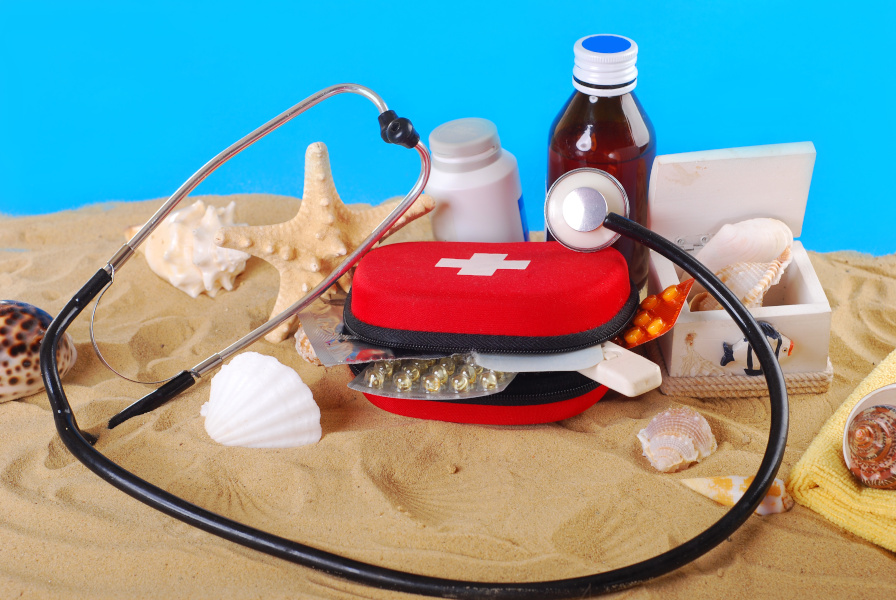
First Aid at Sea: Essential for Safety During Navigation
The importance of knowing how to handle medical emergencies aboard small and large vessels
With the onset of the summer season, the sea fills up with recreational sailing and motor boats, and on all of them a significant number of people are embarked. Crews, if we want to call them that, mostly composed of people who rightly think of everything except the fact that sailing could, at any moment, turn into a more or less important medical emergency. And, above all, people who in their daily lives have nothing to do with the maneuvers necessary in a critical medical situation, even a very small one.
In fact, we never think enough about how crucial it is, for example, to know the Heimlich maneuver to save a person from the risk of choking on food, or whether we are able to check the pulse and heart rate, dress a wound by making an emergency bandage or remove a fishing hook stuck in a finger, or know what to do in case of dizziness, seasickness, earache and breathing difficulties, or even manage more complex situations such as a heart attack, fracture or hemorrhage in the absence of qualified medical contact.
We therefore reiterate the absolute necessity for all mariners to have on board the first aid kit or case Table D, which responds to the new 06/2022 regulations and is mandatory for all pleasure boats sailing beyond 12 miles from the coast as well as for local coastal fishing boats within 12 miles. These cases can be found in all specialty stores and must have certain strength, buoyancy, and safety fasteners.
What must it contain?
The minimal contents must be:
- 250 mL hydrogen peroxide;
- 1 nitrile tourniquet;
- 1 bag of instant ice;
- 1 resuscitation flask;
- 1 adult oronasal mask cal. 5;
- 1 children’s oronasal mask cal. 2;
- 1 hemostatic strap;
- at least 10 hemmed gauze bandages 10 cm high;
- 5 sterile 18×40 gauze pads;
- 5 sterile 20×20 gauze pads;
- 2 plasters 10×6 cm;
- absorbent cotton;
- 1 Lister scissors 14.5 cm;
- 1 pair of sterile gloves size L;
- 5 pairs sterile gloves one size;
- 1 needle and sharps recovery container;
- 1 sphygmomanometer with phonendoscope;
- 1 fracture splint;
- 1 bottle of chlorhexidine mL 500;
- 1 pulse oximeter;
- 1 digital thermometer;
- 1 isothermal blanket;
- 5 steri-strip sutures 6×38 mm;
- Nautical Label Table D decree 2022;
- 1 Copy of the nautical decree G.U. 108 DM 10.5.2022.
- Communication, a decisive aspect
It is also essential to keep the list of emergency contacts within reach of all persons on board: for emergencies at sea of particular importance, the 1530 number is always active, officially included among the emergency numbers and therefore within the NUE112 service – Single European Emergency Number, thanks to which distress calls flow to the regional Single Response Centers (CUR), which in turn then transfer them to the agencies proposed to solve the problems posed.
Also contactable is the International Radio Medical Center: C.I.R.M., a nonprofit foundation that offers support to those in health emergencies while at sea; it is active 24/7, completely free of charge and contactable through the radio stations, via telephone or e-mail: we remind you of the contacts, Tel. +39 06 59290263, http://www.cirm.it– telesoccorso@cirm.it.
The manual of first aid at sea
Third, and no less important, is to have on board a practical manual of first aid at sea, suitable for reading by casual and therefore non-medical operators, able to guide to the resolution of the most trivial problems and to properly deal with the slightly more serious ones. C.I.R.M. itself has edited in this regard a fine manual published by Idelson Gnocchi Editions and available in all bookstores.
Sources
- Idelson Gnocchi Press Release


